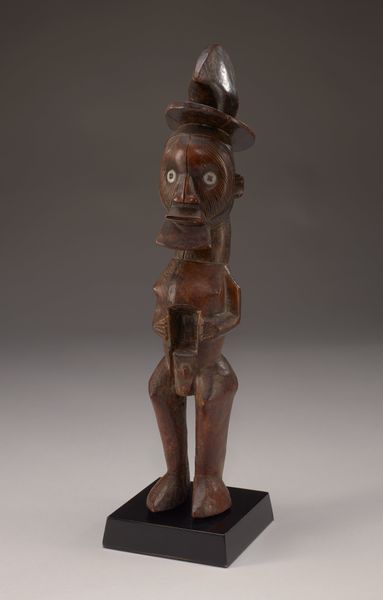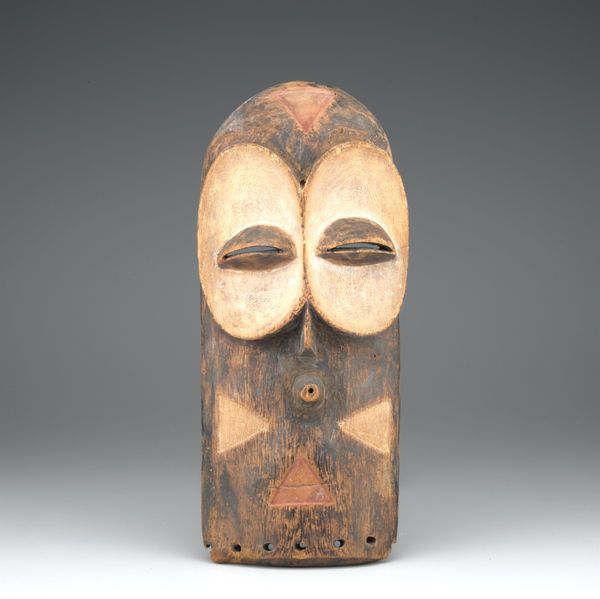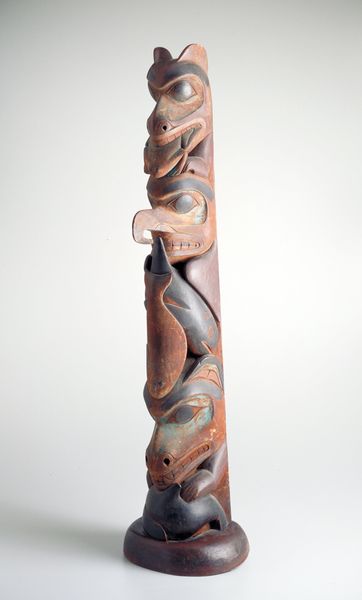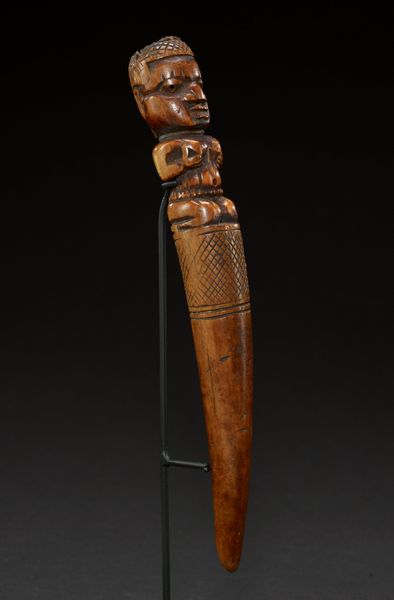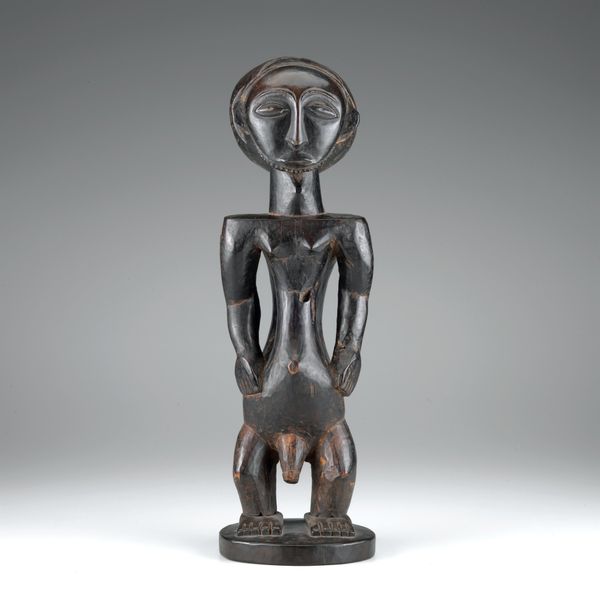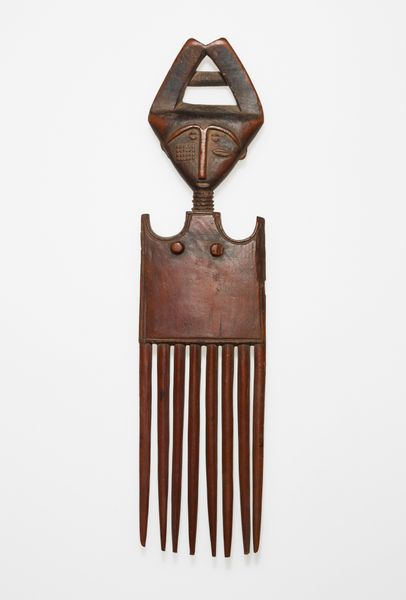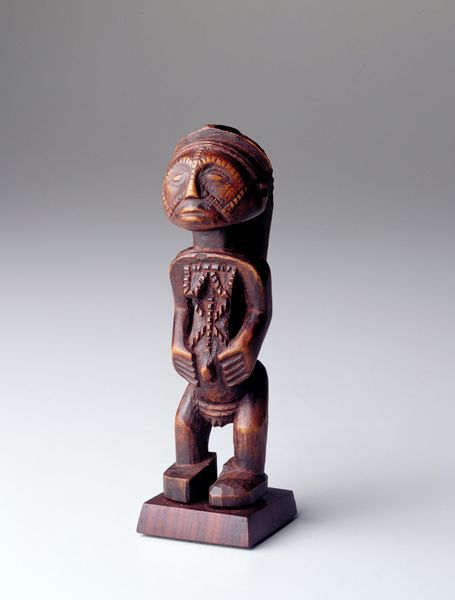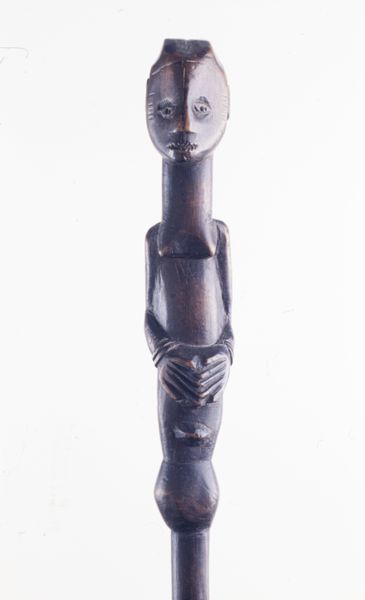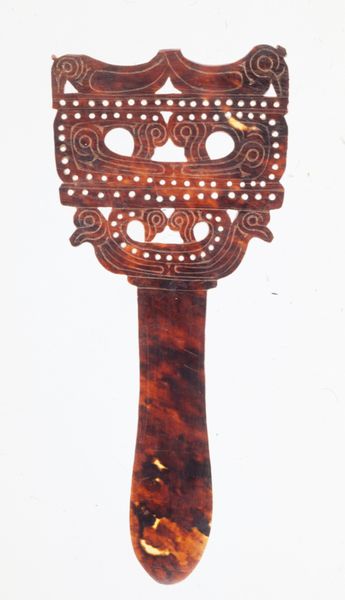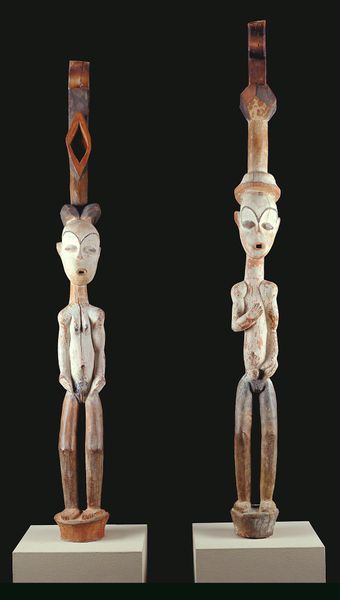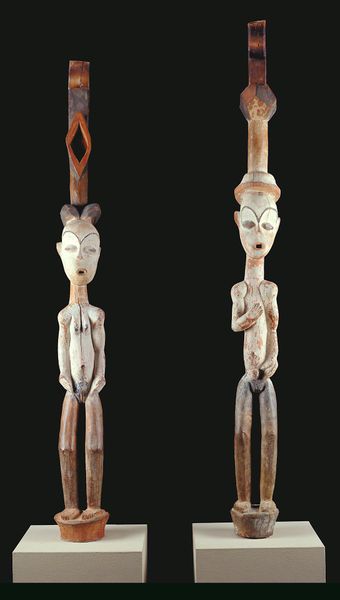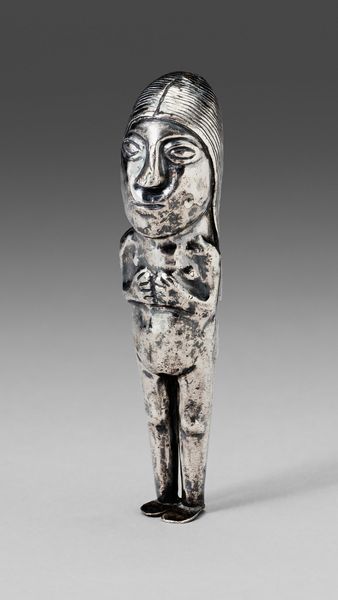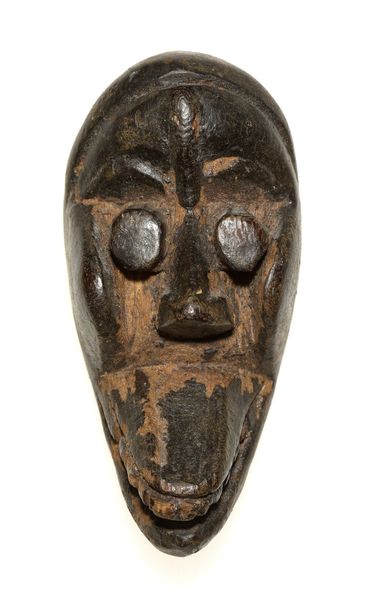
carving, sculpture, wood
#
african-art
#
carving
#
figuration
#
sculpture
#
wood
Dimensions: 7 1/4 x 1 5/16 x 11/16 in. (18.42 x 3.33 x 1.75 cm)
Copyright: Public Domain
Curator: What strikes me immediately about this Comb is the way the deep reddish-brown wood seems almost polished, yet it retains a certain roughness around the carved facial features. Editor: Let's take a closer look at this remarkable object. It's a comb from the Yaka people, crafted around the mid-20th century and now residing here at the Minneapolis Institute of Art. Curator: The faces feel both serene and somehow imposing. I wonder about the specific tools used and the labour involved in such a delicate carving? You know, thinking of it as more than just an implement of adornment, but as an artifact of process. Editor: It's fascinating how these combs weren’t simply functional. They played a key role in Yaka coming-of-age ceremonies, and they served to distinguish leaders based on rank within specific Yaka communities. The two faces might also speak to lineages or familial representation, though it is speculative, without further fieldwork. Curator: So, the comb serves as both a practical tool and a status symbol—I suppose like high heels for Imelda Marcos. I'm also interested in the economic value assigned to objects like this. What trade routes or resources made its creation possible? It is also interesting to notice that only three tines are visible for a comb—how this difference with Western cultures played a role in how value was perceived should not be discarded either. Editor: And we shouldn’t overlook how its placement in a museum—and here on this audio guide—impacts its modern value. The very act of exhibiting transforms its meaning and contributes to an ongoing dialog with past audiences. How has the object been perceived differently? And to what effect? Curator: Considering the Yaka people and the processes behind this carved comb opens questions of authorship, access, and appreciation across the art and artifact divide. Thanks for these thoughtful insights. Editor: Indeed! Bringing its layered story to life enhances our view and expands this comb's influence and impact as more than simply an object on display.
Comments
minneapolisinstituteofart about 2 years ago
⋮
Hairstyles have long reflected personal aesthetics in African and African-American cultures. And when adorned with extensions, beads, pins, or combs, they can indicate a person’s status, ethnic origin, gender, profession, or even what phase of life they’re in. These three combs, from West and Central Africa, show how African artists turn even everyday objects into accomplished carvings.
Join the conversation
Join millions of artists and users on Artera today and experience the ultimate creative platform.
